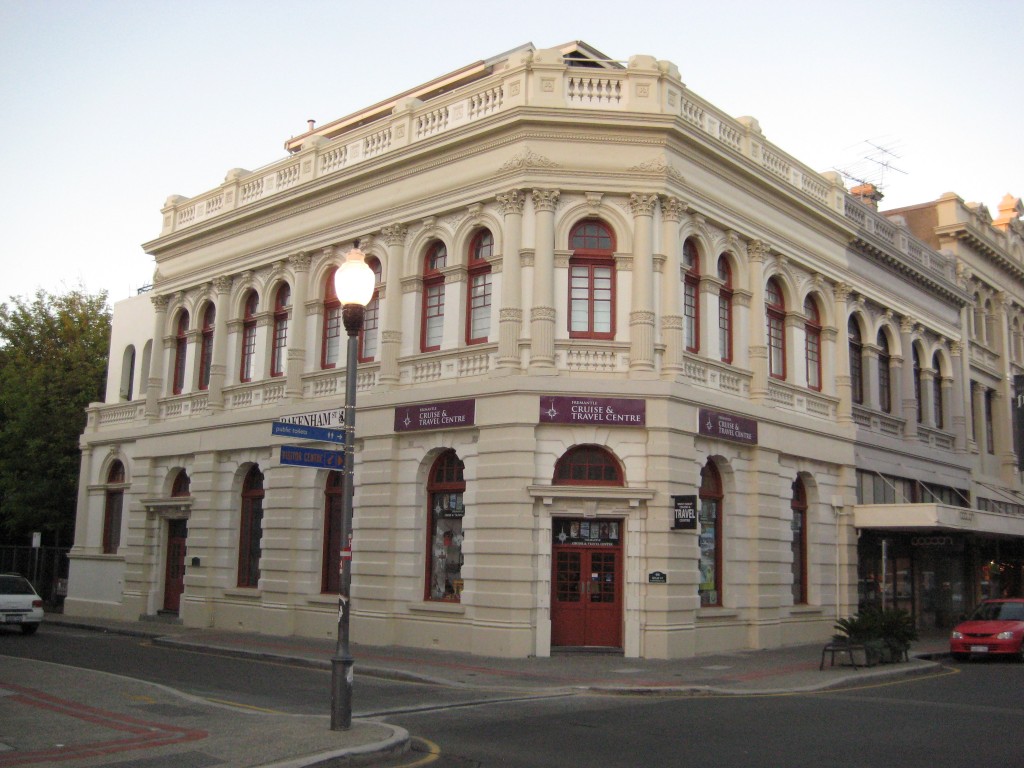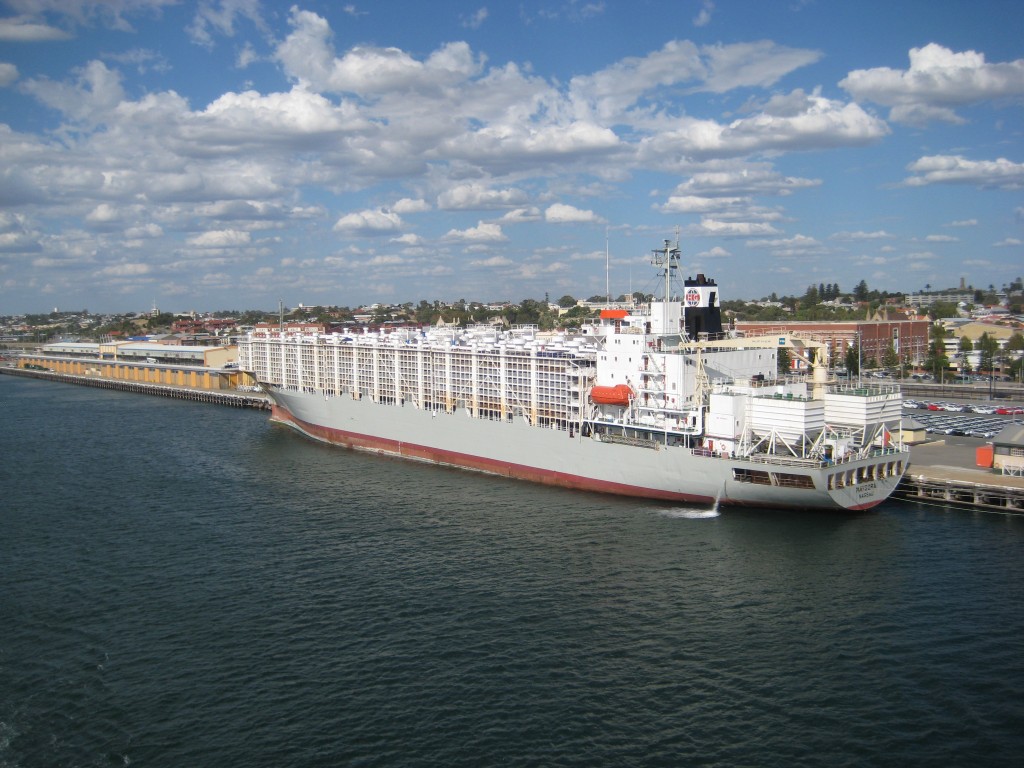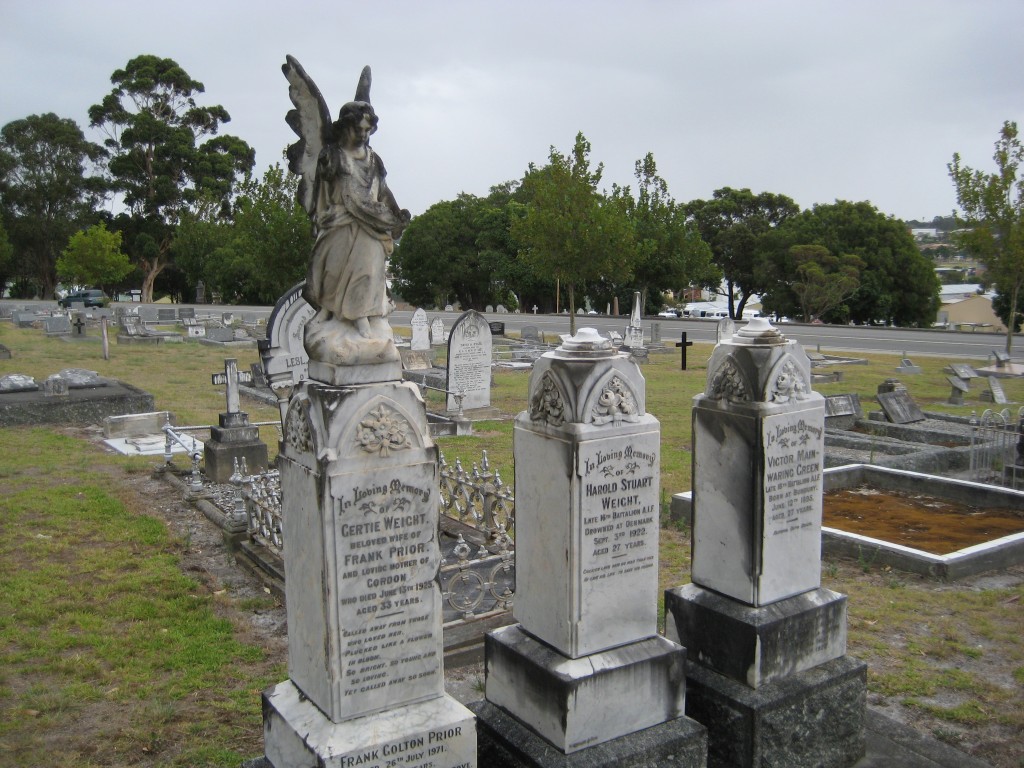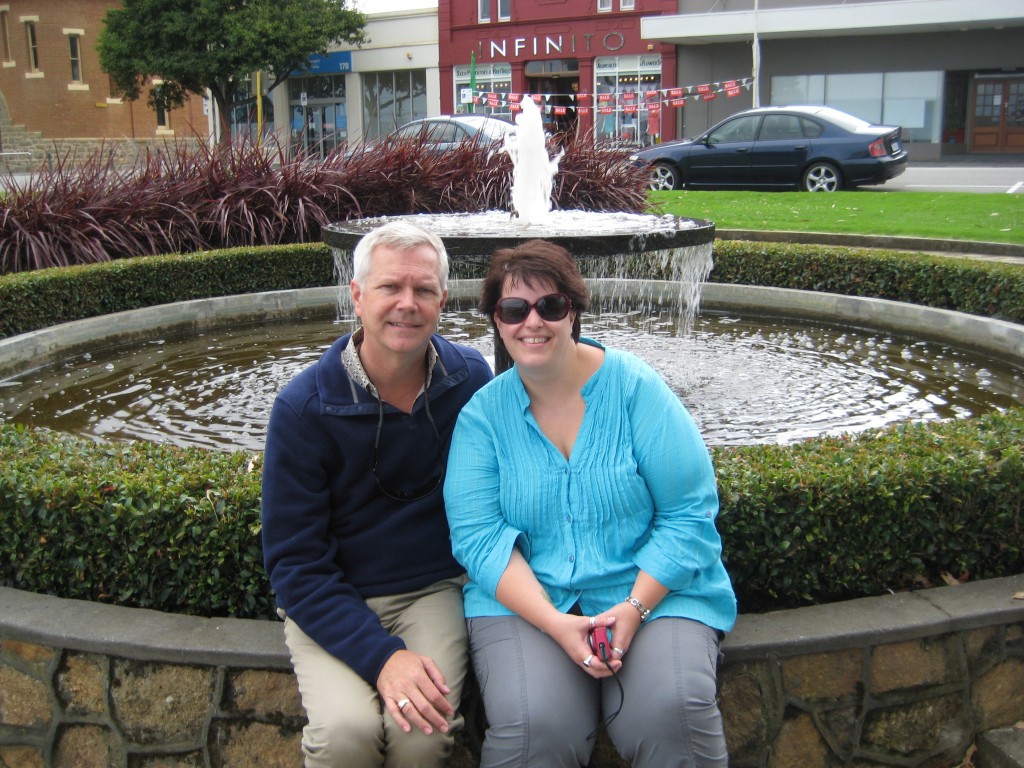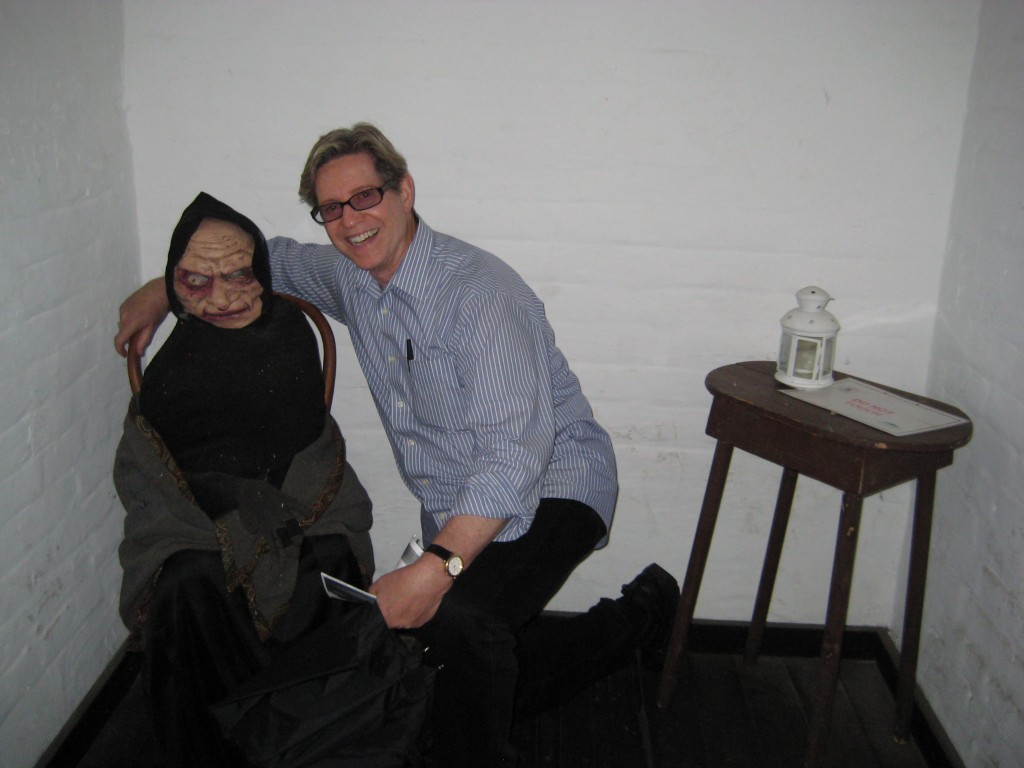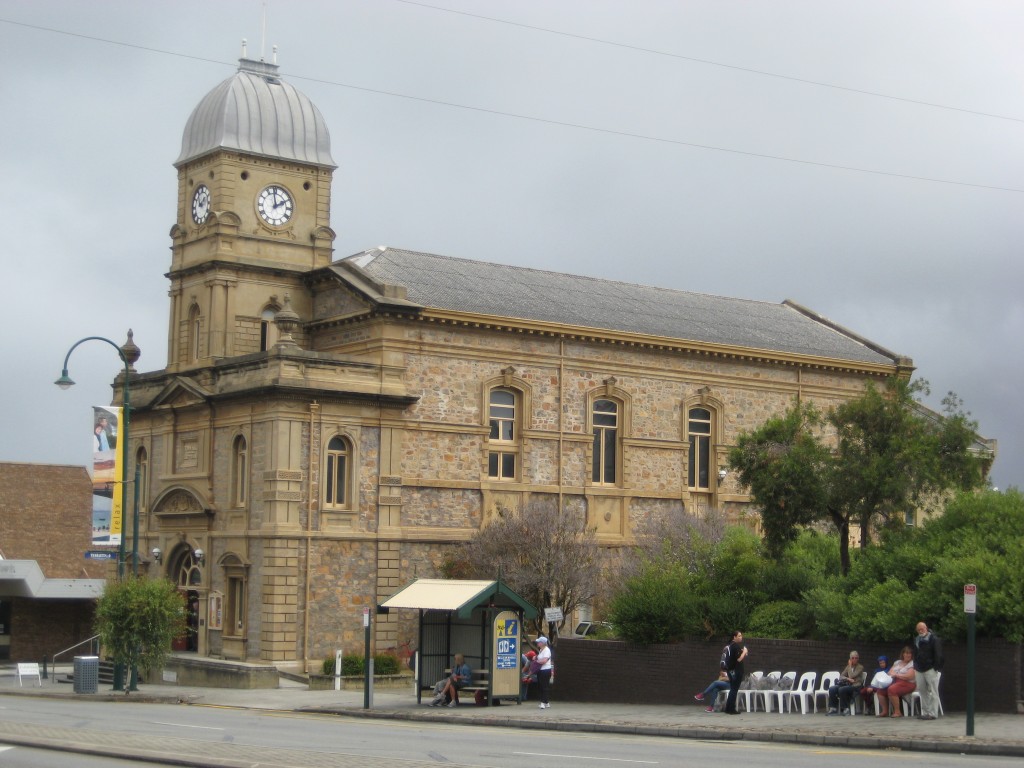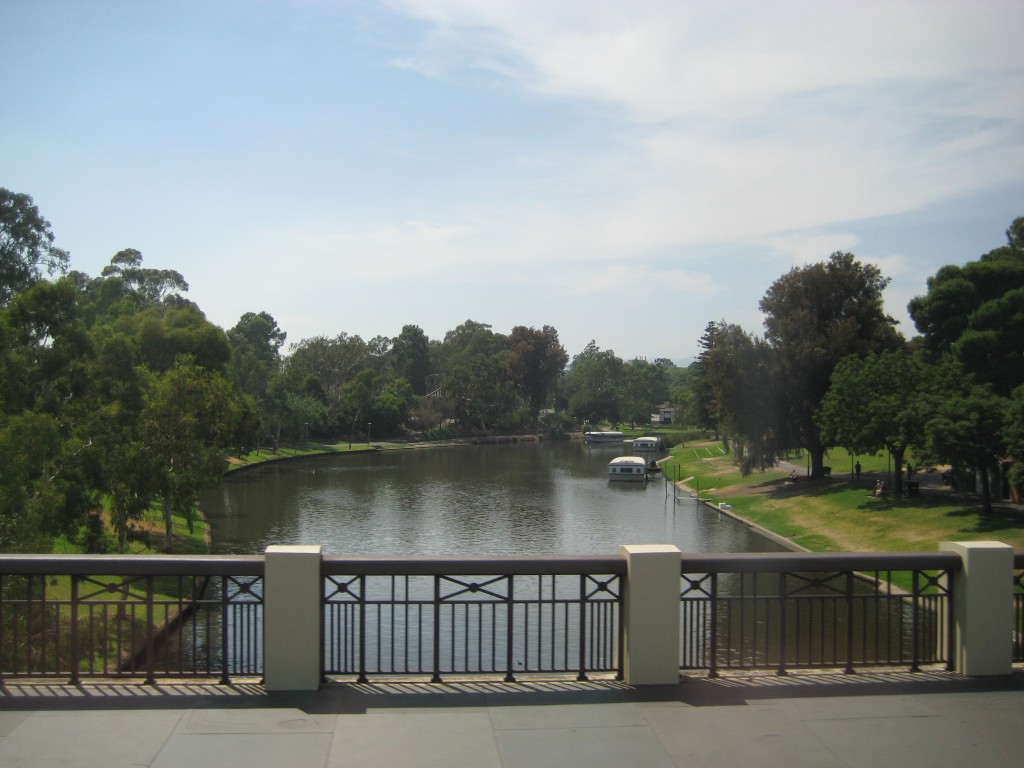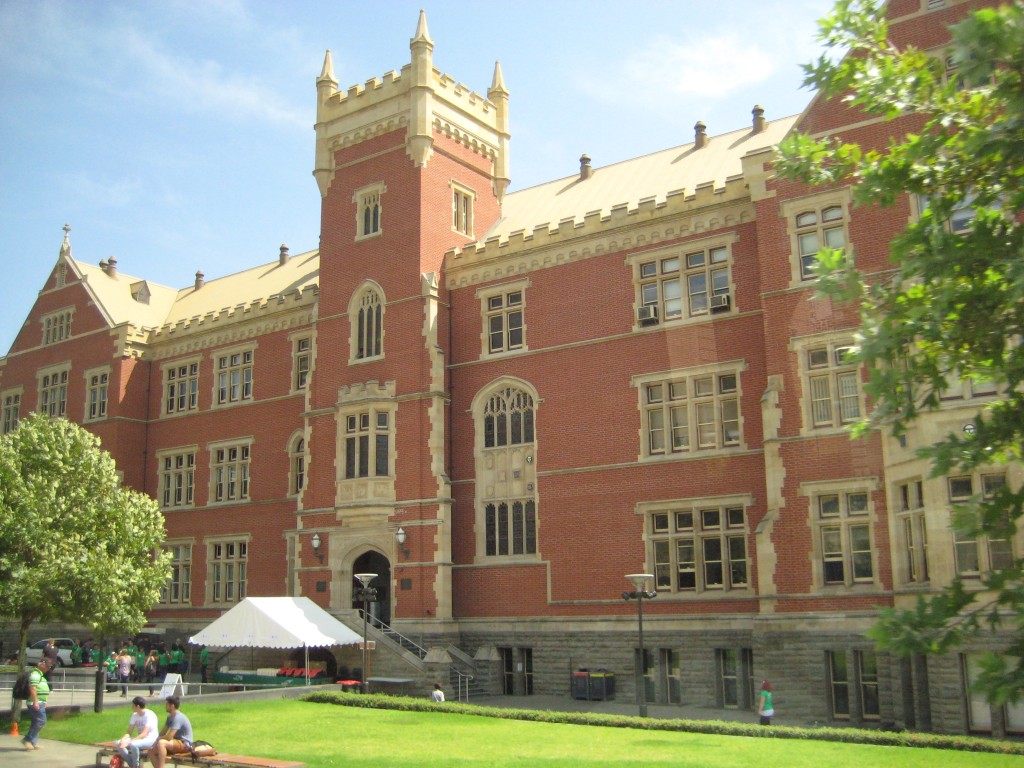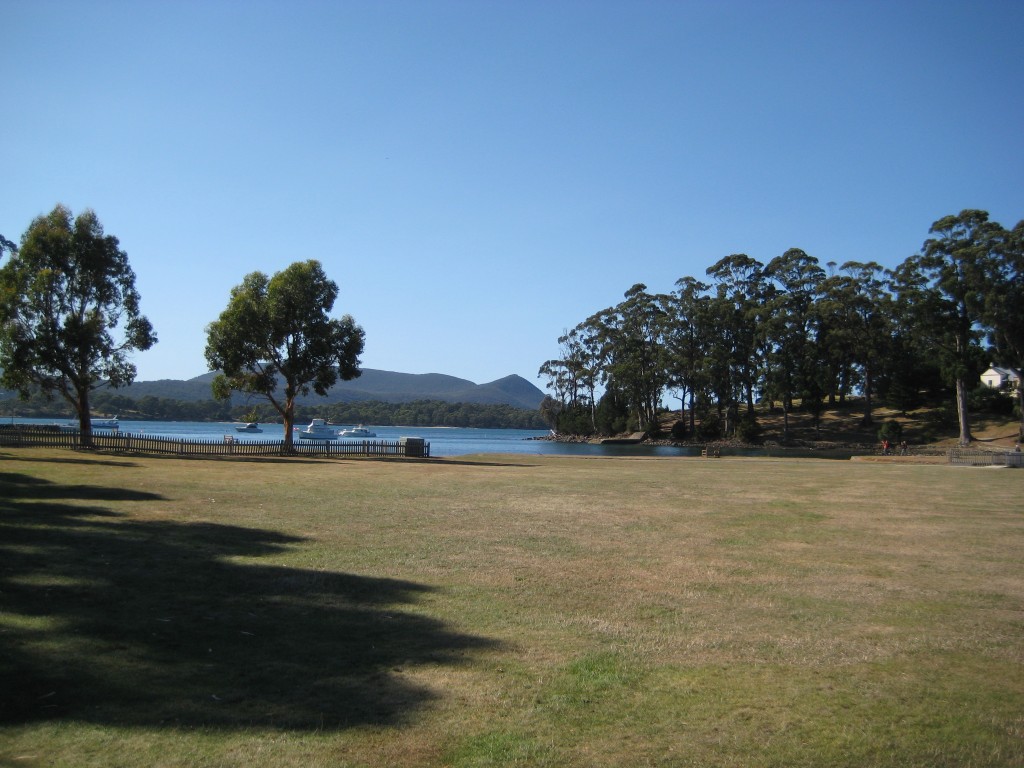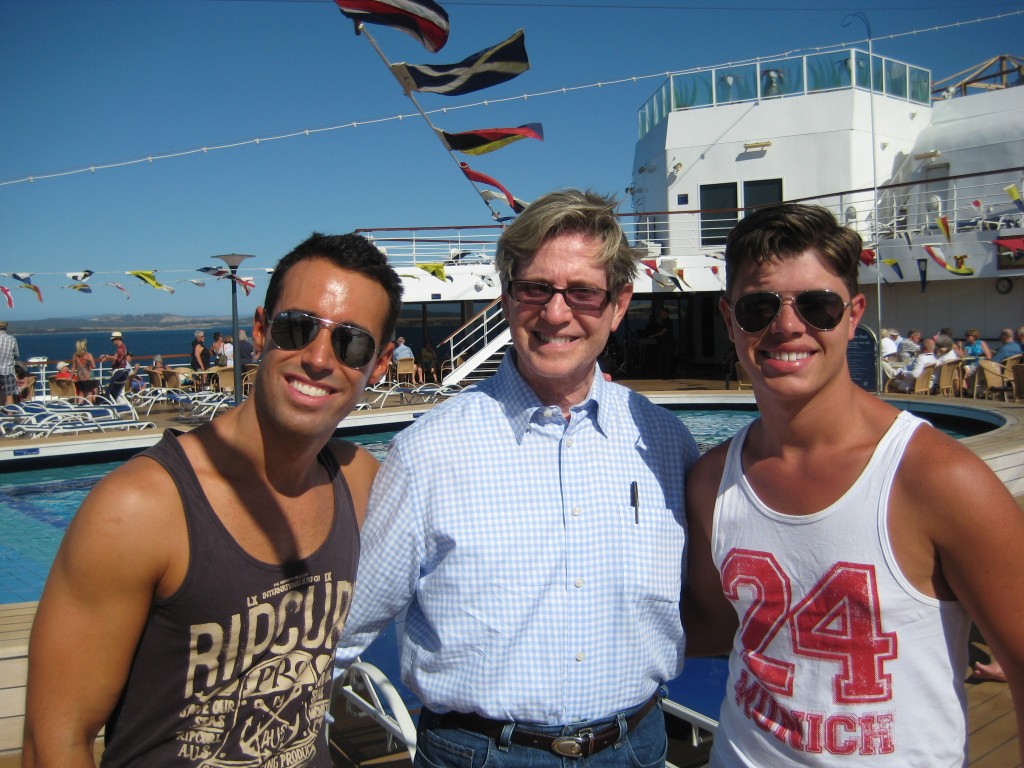February 27, 2013 Sea Day
This was the first of three sea days on our way to Bali. We attended the “Good Morning Amsterdam” show where the guest of the day was the piano bar pianist Debby Bacon. Debby is from Tampa, Florida and this is her fourth world cruise. She is traveling with her husband Ron who is also a musician but does not work on the ship and is only accompanying her. Prior to working on cruise ships Debby worked in a Tampa hotel bar for 18 years where she worked from 5:00 to 9:00 Monday through Friday. In addition to her cruise ship work she also works four months of the year at a hotel in Amsterdam playing the piano. In addition to the piano she plays the saxophone, organ and xylophone and she also sings. She has quite a loyal following of passengers onboard and can play just about anything. She has a vast array of music on her computer and can easily access the music to most anything someone would like to hear her play.
Barbara, the onboard travel guide, spoke about what to see and do in the port of Benoa, Bali today. This is a change of ports due to the fact that the previously scheduled tender port docks have been damaged or destroyed by storms recently. Benoa is at the southern edge of Bali but it had a port large enough for the ship to dock without having to use the tender boats.
There is a new Explorations Speaker by the name of Aileen Bridgewater onboard until Hong Kong. Aileen hosted Hong Kong’s longest running English daily radio talk show for 14 years, broadcasting phone calls live. She has interviewed thousands of celebrities in the studio and traveled worldwide to interview people making the news, including Princess Diana, Mother Teresa and the Dali Lama. After her talk show she spent nine years lecturing throughout the United States, covering Hong Kong and the Far East. Aileen is a fascinating speaker with one story after another. She speaks using audio clips of her guests to help tell the stories. Today, she talked about her interviews with, among others, Bob Hope and William Holden, the owner of the radio station.
In the afternoon we attended a rehearsal for the Amsterdam singer and dancers final show this evening before they disembark in Manila to perform on another ship in the fleet. We will get the cast from another cruise ship that will perform a variety of new shows for us in the future.
Bob Tonkinson presented another lecture on the Aborigines religious beliefs and cultural symbols. He showed a series of slides of the Aborigine people taken during the early years of his work in the 1960’s.
The Amsterdam Singers and Dancers show titled Centre Stage included a variety of musical theater favorite songs from Moving on Out, Mama Mia, Funny Girl and Mary Poppins. It was a fun filled show with some familiar songs.


